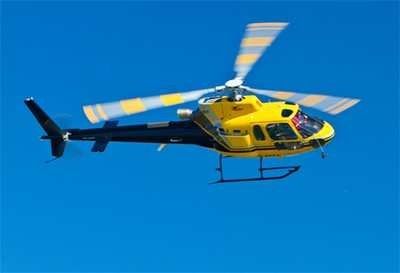Releases Probable Cause Report From June, 2014 Accident
The NTSB has released its probable cause report from an accident involving a tourist helicopter in Hawaii on June 17, 2014. The aircraft went down shortly after departure on its third local tour flight of the day. There were seven people on board the aircraft at the time of the accident, and all fortunately walked away.

The Airbus AS 350 BA helicopter, N6094H, sustained substantial damage during a hard landing following a loss of engine power and off airport auto rotation. The helicopter was registered to and being operated by Sunshine Helicopters Inc., Puunene, Hawaii, as a visual flight rules (VFR) scenic tour flight under 14 Code of Federal Regulations (CFR) Part 135. Visual meteorological conditions prevailed; the pilot and the six passengers were not injured. The flight departed Kahului Airport (PHOG), Kahului, Hawaii, about 1300, and company flight following procedures were in effect.
According to the report, about 10 minutes after departure, the main rotor speed (rpm) started to decrease and the low rotor warning alarm sounded. The pilot lowered the collective pitch control to increase rotor rpm, and the helicopter started to descend. He then raised the collective pitch control, and the main rotor rpm started to decrease again. The pilot entered an autorotation, and the helicopter landed hard in tall grass, resulting in substantial damage to the fuselage and tailboom.
A test run of the engine revealed that, when power was applied, the engine would not achieve a speed above about 78% Ng (engine gas generator speed). Fuel flow indications during the test run were between 125 and 140 pounds per hour (pph); the required value was 300 pph. A leak test of the pneumatic controls revealed that the fitting for the input line to the pneumatic pressure (Pc) filter housing was fractured. A second test run of the engine, following replacement of the Pc filter assembly, was successful. Thus, the fractured fitting rendered the control system incapable of modulating Pc pressure to the fuel control, which resulted in a loss of engine power.
Further examination of the fitting revealed fracture features consistent with fatigue and overload. The Pc filter requires continuous recurring inspections. The filter housing is hardmounted to the side of the engine plenum and connected to the system via hard pneumatic lines with torqued fittings. Each time that the filter is inspected, the filter housing fittings are subjected to mechanical loosening and re-torqueing. It is likely that the repeated loosening and re-torqueing of the fitting during required maintenance and inspection contributed to the fitting's failure. Following the accident, the manufacturer issued a service bulletin regarding the service and inspection of Pc filter fittings.
The National Transportation Safety Board determined the probable cause(s) of this accident to be the failure of the engine's pneumatic fuel control line fitting, resulting in a loss of engine power. Contributing to the failure was the repeated loosening and re-torqueing of the fitting during required maintenance and inspection.
(Image from file. Not accident aircraft)
 ANN's Daily Aero-Term (04.20.24): Light Gun
ANN's Daily Aero-Term (04.20.24): Light Gun Aero-News: Quote of the Day (04.20.24)
Aero-News: Quote of the Day (04.20.24) ANN's Daily Aero-Linx (04.21.24)
ANN's Daily Aero-Linx (04.21.24) Aero-News: Quote of the Day (04.21.24)
Aero-News: Quote of the Day (04.21.24) ANN's Daily Aero-Term (04.21.24): Aircraft Conflict
ANN's Daily Aero-Term (04.21.24): Aircraft Conflict



